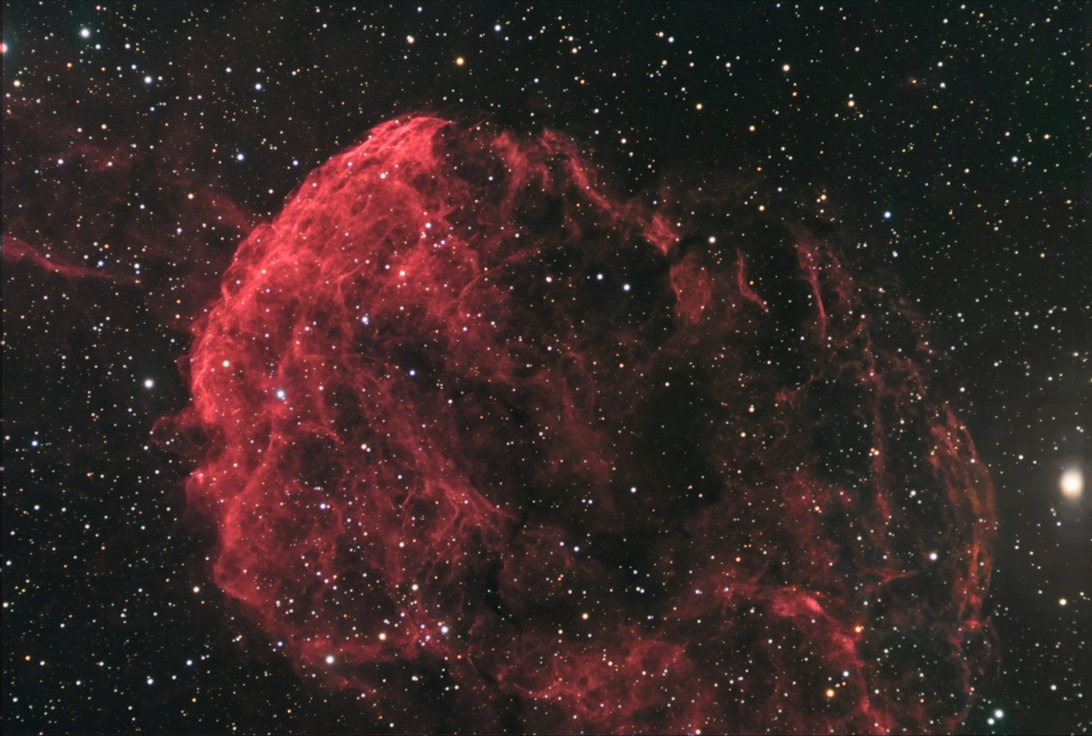Technical Information:
(HaR)RGB: 390:55:55:55 (Luminance layer consists of a blending of thirteen 30-minute images through an Astrodon Ha filter and eleven 5-minute images through an Astrodon red filter; red channel consisted of a similar, but not identical, blend of the same data; green and blue channels were both eleven 5-minute images with Astrodon filters. All images unbinned).
Equipment: Astrophysics AP130 f/6 Starfire refractor without a field flattener, and an SBIG ST-10XME with CFW8 filter wheel (Astrodon filter set), on a Bisque Paramount ME German Equatorial Mount.
Image Acquisition/Camera Control: CCDSoft v5, sometimes controlled with CCDAutoPilot3, and working in concert with TheSky v6.
Processing: All images calibrated (darks and dawn flats) in CCDSoft. Ha channel combined in Ray Gralak's Sigma pre-beta 11; R, G and B channels combined in CCDStack. Ha channel registered in CCDSoft v5, and debloomed in Ron Wodaski's debloomer. R, G and B layers registered and debloomed in CCDStack. The Ha channel was deconvolved separately in both AIP4WIN and CCDSharp, and both versions contributed to the final luminance layer. Color combine, and curves and levels, and desperate efforts to minimize the horrendous effects of the bright yellow star (actually, a magnitude 3 red giant with a companion yellow star, whose light came to me bright green), in Photoshop CS2.
Location: Data acquired remotely from the Tejas Observatory, located on the grounds of New Mexico Skies, near Mayhill, NM (elevation 7300 feet).
Date: Hydrogen alpha images taken during the night of 12/9/2006; RGB images taken during the night of 12/16/2006.
Pixel scale: 1.67 arcseconds per pixel.
CCD Chip temperature: -25C
Seeing: Poor for Ha channel; excellent for color channels (yeah, a bit backwards).
Transparency: Very good
Moon Phase: Waning gibbous for Ha images; waning crescent for R,G,B
